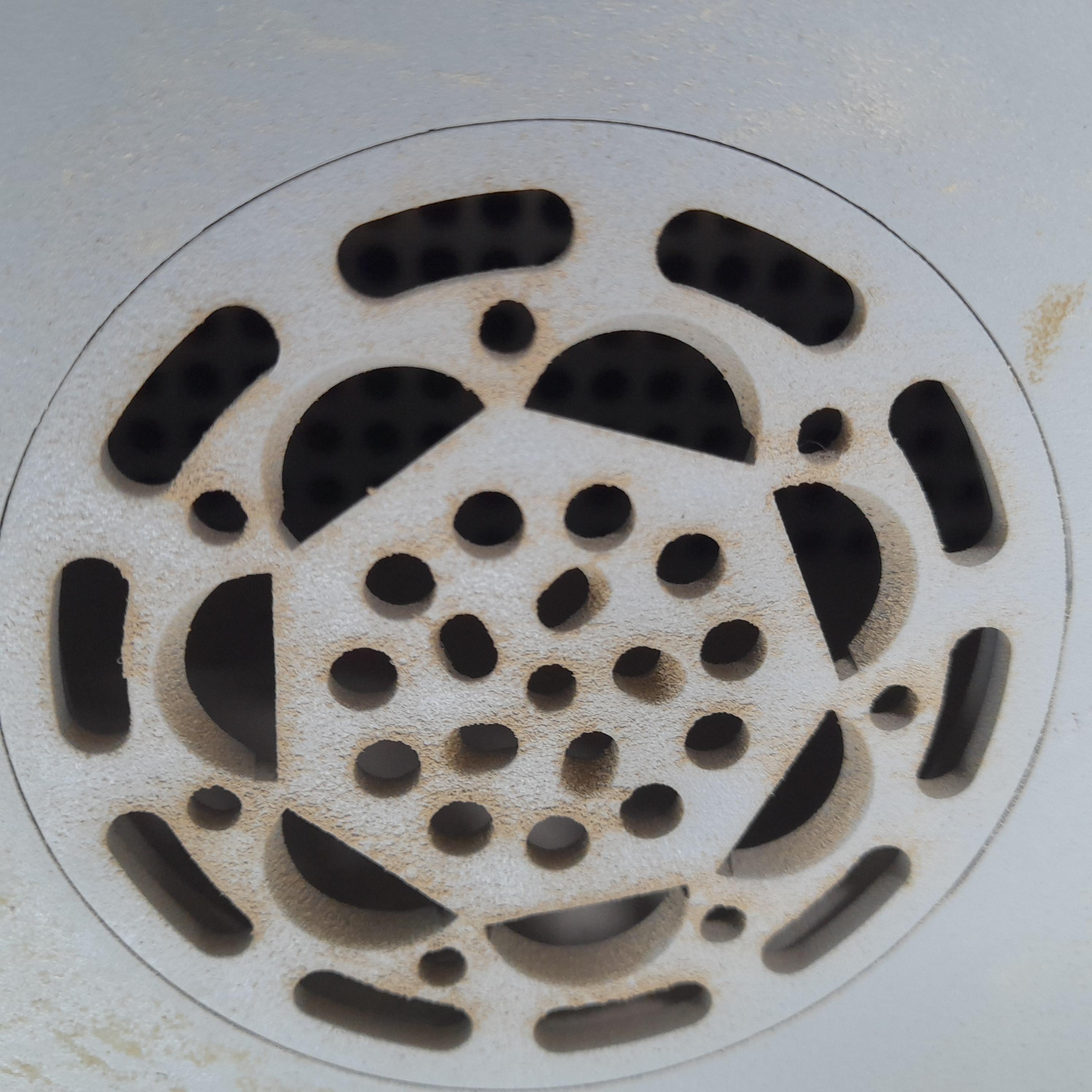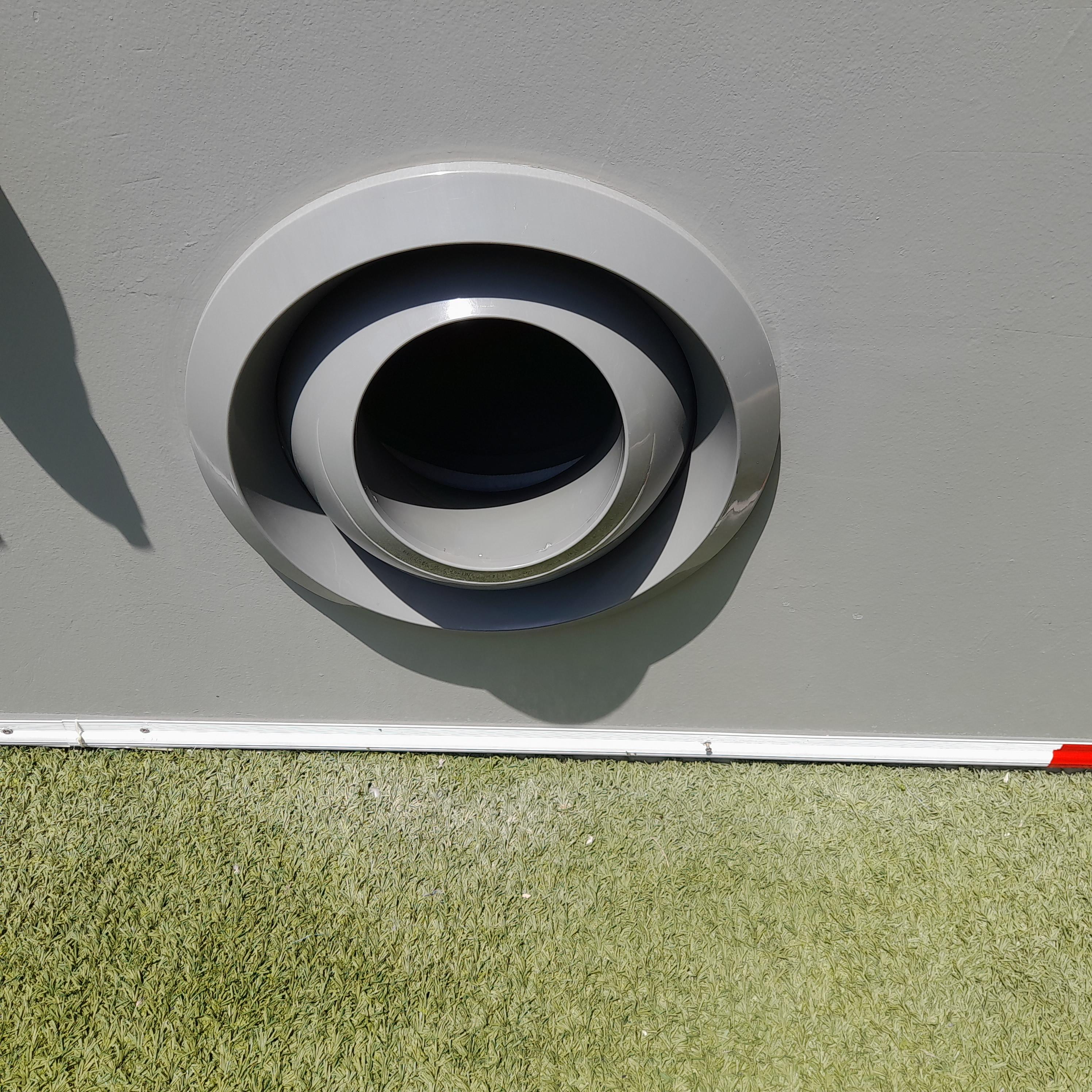Why the World Cup should be a cool experience
“We are always playing with pressure here,” said Saud Ghani. Lifting the bottle of water he was holding, Ghani told the international media contingent sat on lower tier seats of Al Janoub Stadium: “If you put oil in here, it would settle on the top with the water below. That is essentially what we are doing here.”
The temperature where we sat was around 21 degree Centigrade, half of what it was outside even though we were, well, outside. Ghani, a PhD in mechanical engineering, materials and manufacturing engineering from University of Nottingham who teaches at Qatar University, then turned around and pointed to indigenously designed plastic vents lining the pitch perimeter. They will stay switched on during games exhaling drafts of cool air whose momentum has been calculated to ensure that it dies by the touchline, he said. Stand near the vents and you can feel the swirl, move around four feet away to the touchline and you will feel nothing. “Because the air is settling down and the hot air rising.”
Two rings of seats, 40,000 in all half of which would be dismantled after the World Cup, are cooled through grills embedded in the concrete tiers in this stadium of sensors — they are in the grass, imported from USA, too to monitor if the roots are getting enough oxygen — and cameras of which there are 1500. “You will be watched,” said Abdulaziz al-Ishaq, the stadium director and former defender at Al-Wakrah, smiling.
Whether or not it plays Big Brother, the cameras will notice what people in a section of a stand are wearing and by conveying that information to the control room help adjust temperature in that area, said Ghani. That way you don’t need to lower the temperature of the whole stadium to achieve optimal cooling, he said. “If, say, a section has everyone wearing overcoats, that portion will be cooler than the area where people are in lighter clothes. And not just thickness, it will also note the colour.”

Here, a spectator would generate “the heat equivalent of two laptops and 70gm of sweat in a sitting position in an hour,” said Ghani. And then there are skin flakes and hair they would shed, he said. “To ensure that you are enclosed in quality air, it will be filtered and recycled. That puts you in a micro bubble with the stadium itself being a macro bubble.”
Involved with the project since the time Qatar bid for the World Cup, “because we knew there would be issues with heat,” Ghani said the technology is now available to anyone who wants it and is being used in agriculture to make his country self-sufficient. Using this, Qatar can now grow tomatoes, “which are sensitive to temperature change”, and cucumbers through the year while significantly reducing greenhouse emission.
The energy required to drive this comes from a solar grid. Every drop of water we get here is used, said Al Ishaq. “The chilled water needed for cooling can be stored,” said Ghani. “In case of a power failure, this stadium can be 100% functional with one generator, for six hours.”
Located in Al Wakrah, 22km from Doha, the stadium with a retractable roof has pleated walls and is shaped like the giant pearl. The roof, said Al Ishaq, was an idea of the late British-Iraqi architect Zaha Hadid, who also designed the London Aquatics Centre, to enhance the feeling of being in dhow. “This was an area where pearling was big,” he said.

Till Japan invented artificial pearls in the early 20th century, diving in the sea for the real deal was a major source of livelihood in the region— fans at the World Cup can retrace that journey at Doha’s National Museum.
Unlike 974 which can be transported and hence is the only one among the eight for the World Cup to not have artificial cooling, this stadium with parks, cycling and running tracks which are used by people in the neighbourhood, will be a legacy —for the next 100 years, according to Ghani—and home to Qatar Stars League club Al-Wakrah SC.
BOX MATTER
Al Janoub Stadium: Facts in figures
40,000: Stadium capacity for World Cup
20,000: After World Cup. It will be home to Al-Wakrah SC
7: Number of World Cup games including one in Round of 16
Nov 22: Will host first World Cup match between France and Australia
1500: Number of CCTV cameras
350: Sensors to help regulate temperature
May 16, 2019: Stadium inaugurated; was the first among the 7 to be built from scratch
2014: Work began to get site ready
2016: Construction work started
Enjoy unlimited digital access with HT Premium
Subscribe Now to continue reading

For all the latest Sports News Click Here
For the latest news and updates, follow us on Google News.

